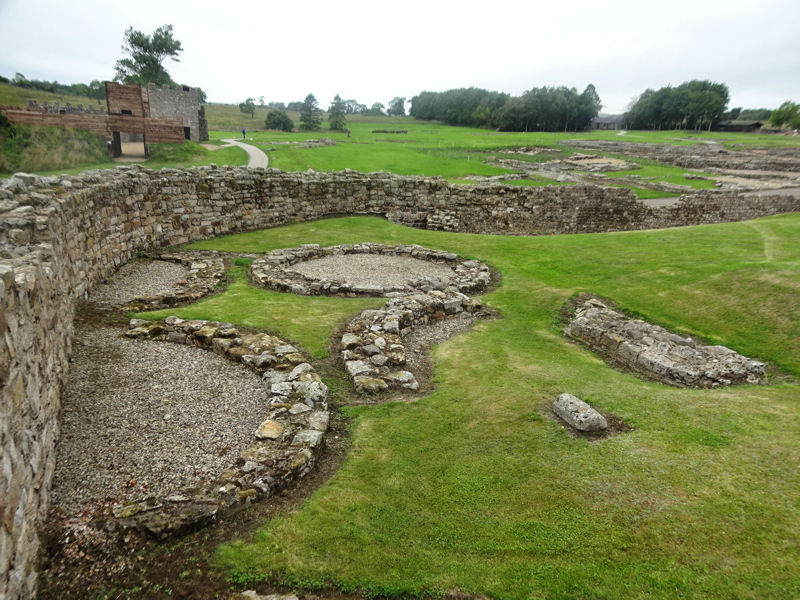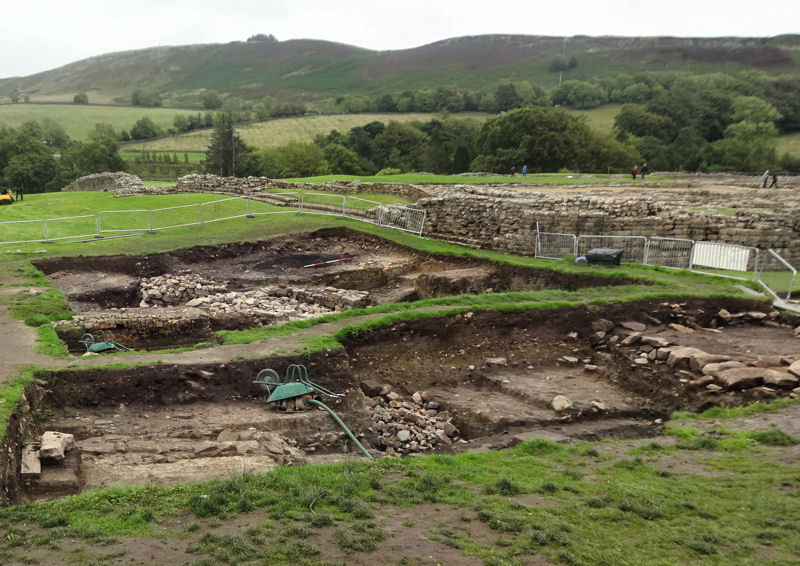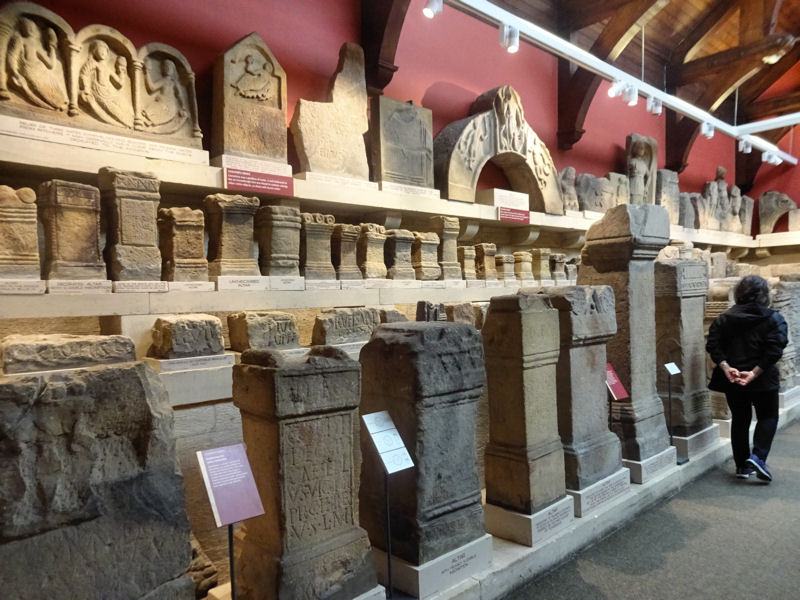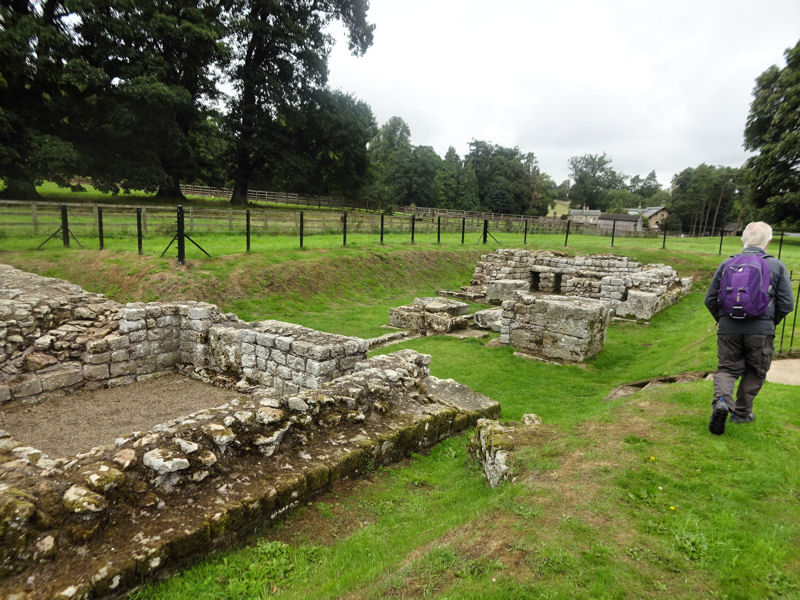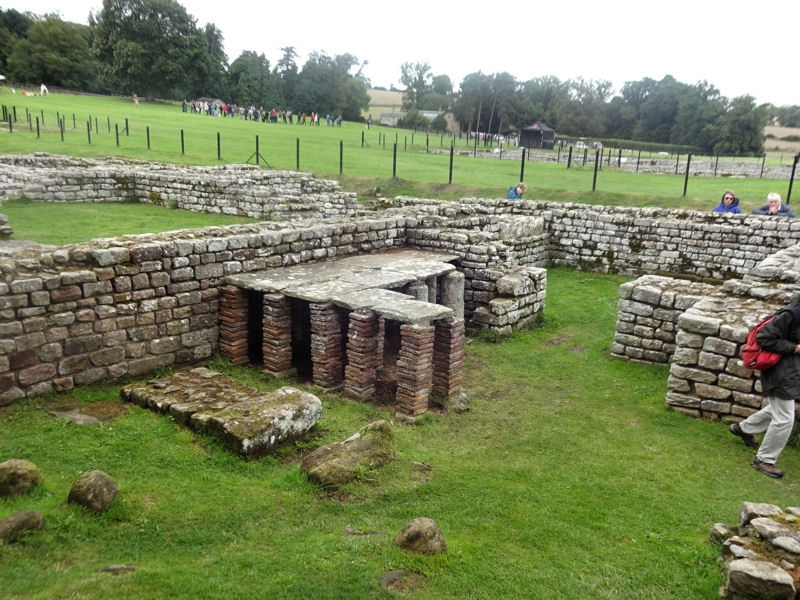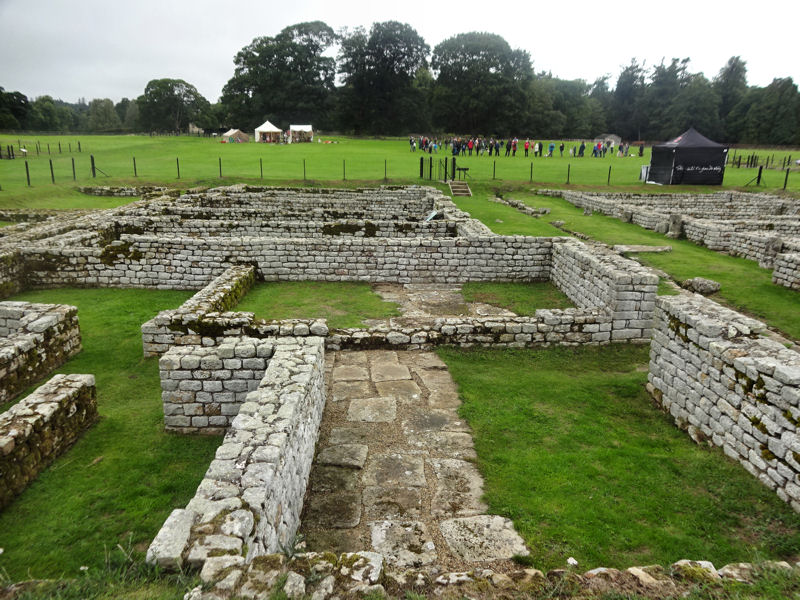The idea for this trip was to have a long distance outing similar to last year’s successful Orkney visit – and Vindolanda (and the forts on Hadrian’s) seemed to be a suitable destination. Despite initial response, however, the eventual turnout was poor and on the day, even the person suggesting it, couldn’t make it. In the end, just myself, Eric and our spouses made the trip (Tracey and her daughter also got there but communication issues unfortunately meant we failed to meet up). Despite the poor turnout the trip was very enjoyable and we got to understand a lot more about the sites we visited.
Vindolanda
We arrived at about midday and picked up our guide shortly after. She was short on stature and vocal volume, but her knowledge of the site was impeccable.
We’ve been to Vindolanda a few times before but it’s only now that I’m beginning to appreciate the full extent of the Roman presence there. Centuries of occupation and many rebuilds have left the imprint of many forts all of which seem to have been built on different alignments.

Late 2nd C bathhouse, eventually connected to the commander’s house of the early 3rd C Severan fort (now in the vicus area)
At least half a dozen forts have been identified spanning perhaps ten different periods. Many features are still not fully understood such as sets of circular buildings underlying the current fort.
Interesting to note the bathhouse on the south side of the current fort is of a similar design as the one found in Wigan. It was also from the same period and suffered the same fate being demolished in the mid 2nd century.
Current excavations on the north side of the current fort are revealing the previous fort lying a good few metres down.
Since we were here last, the museum has had more than one overhaul. It’s amazing the amount of material on show but it’s the writing tablets that always provide the greatest fascination (although the array of Roman footwear is also staggering).
Roman boot and shoe collection
After a long day, including lunch in the museum’s excellent cafe, we retired to our B&B in Haydon Bridge. The evening meal in at the Anchor Inn at Haydon Bridge was also excellent.
Chesters
Next day after breakfast we set off bright and early for Chesters Roman fort on Hadrian’s Wall. The first thing you come across here is John Clayton’s museum collection. Clayton was a 19th century antiquarian, who at one time, owned 5 forts on the Wall. He did a lot in rescuing the site from destruction by local farmers.
As it happens on the day of our visit, the Roman army were in town demonstrating their prowess with weaponry skills and performing gladiatorial combat.

The site itself has some fine upstanding remains including gateways, HQ building, commanders house complex, stables and barrack blocks.
but what the site is best know for must surely be it’s bathhouse.
Binchester
After a tea break in the onsite cafe, we made our way to our next site – Binchester, which in fact was a good hour way down Dere Street Roman road.
Here there were two bathhouses we needed to see. The first one professes to be the best preserved bathhouse in the country – certainly the only one with a complete floor still in situ. Unusually this bathhouse is in fact inside the fort complex.  The second bathhouse is outside the fort on the south side and has only been excavated in recent years.
The second bathhouse is outside the fort on the south side and has only been excavated in recent years.  Deep excavations have revealed a quite flimsy structure. The only reason it survived is because the land gradually rose overtime and when the building was abandoned it was back-filled with Roman rubbish.
Deep excavations have revealed a quite flimsy structure. The only reason it survived is because the land gradually rose overtime and when the building was abandoned it was back-filled with Roman rubbish. 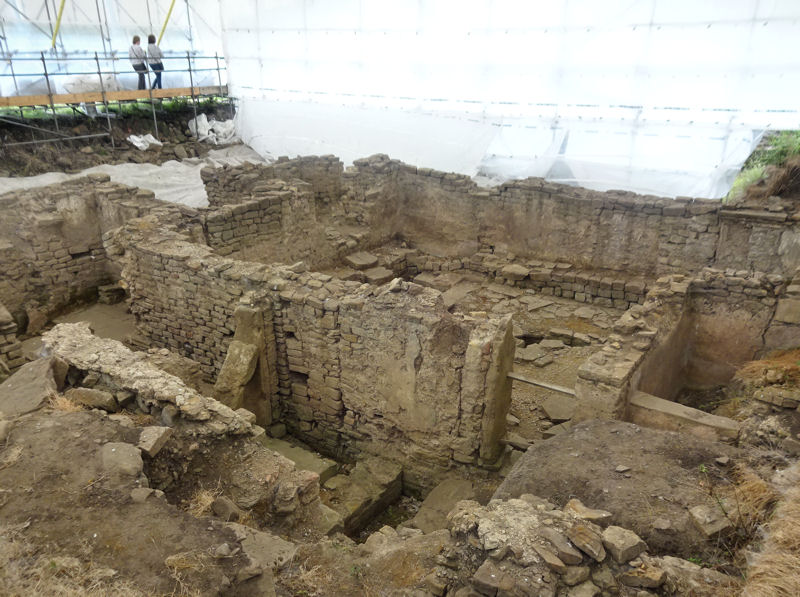 I must admit to me it doesn’t scream bathhouse – not one hypocaust for instance but that is its designation. There are plenty drains, plastered walls and water tanks which suggests some sort of process involving water.
I must admit to me it doesn’t scream bathhouse – not one hypocaust for instance but that is its designation. There are plenty drains, plastered walls and water tanks which suggests some sort of process involving water.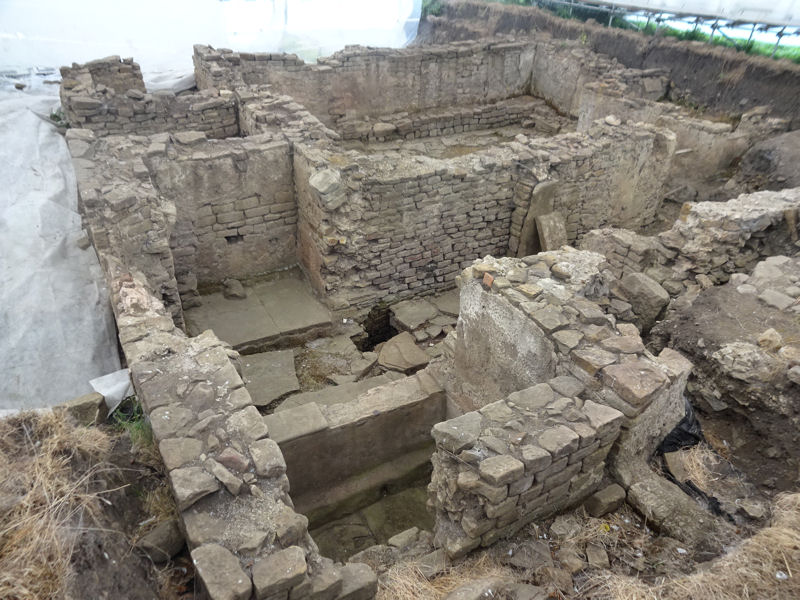
Over two hours back home from here but all in all it was a great trip – pity we didn’t get more takers, maybe next time.



